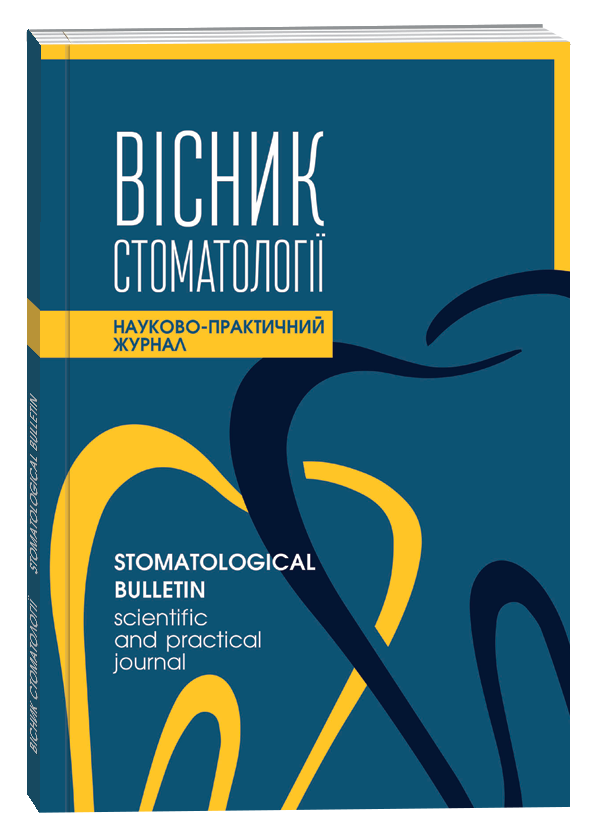MORPHOLOGICAL FEATURES OF TEMPORARY TEETH IN CHILDREN LIVING IN MOUNTAIN AREAS OF THE TRANSCARPATHIAN REGION
DOI:
https://doi.org/10.35220/2078-8916-2022-45-3.22Keywords:
temporary tooth, enamel, dentinal tubules, enamel resistance, near-pulp dentin.Abstract
Purpose of the study: To find out the morphological features of the structure of temporary teeth in children who permanently live in the mountainous zone of the Transcarpathian region. Object of study: the study was performed on 30 teeth that were removed for orthodontic indicators or during a period of physiological change. Research methods. Removed teeth were placed in 10% buffered formalin for 24 years, then subjected to acid-free decalcification, and control was performed starting from 21 days. After 1 month, the material was compacted in paraffin according to the conventional method, followed by the manufacture of sections with a thickness of 5 μm. and hematoxylin and eosin staining. During the work, photo documentation was performed using a Biorex – 3 VM – 500T microscope with a DCM – 900 digital photomultiplier and Exel software was used. Scientific novelty. In the modern system of dental care, given the high prevalence, intensity of caries and the percentage of its complications, one of the unresolved issues is the peculiarity of the structure of the hard tissues of the teeth, especially from the endemic area of residence of patients. Our research allows us to clarify the features with the improvement of the proper selection of preventive measures and filling materials, which, in turn, improves the quality of treatment. Conclusions. Registration of errors and the development of complications that occur during treatment requires a clear understanding of the morphological features of the structure of hard tissues of the teeth, taking into account the territorial and endemic affiliation of the patient, in order to improve drug selection at the stage of adhesive protocol and filling material. And also – means for exogenous caries prevention in order to reduce the prevalence and intensity of the pathological process in mountain endemic areas.
References
Безвушко Е.В., Мельничук Н.І., Гутор Т.Г. Карієс зубів та фізичний розвиток дітей, які проживають в окремих біогеохімічних провінціях Закарпаття. Вісник проблем біології і медицини. 2014. № 3(2). С. 320 – 323.
Годованець О.І., Котельбан А.В., Гринкевич Л.Г., Романюк Д.Г. Чинники ризику розвитку захворювань твердих тканин зубів у дітей. Медицина сьогодні і завтра. 2019. № 4 (85). С. 111 – 120.
Дуда К.М., Лебідь О.І. Поширення стоматологічних захворювань серед дітей віком 6–9 років. Клінічна стоматологія. 2019. № 1. С. 48 – 51.
Клітинська О.В., Стішковський А.В., Гасюк Н.В. Аналіз впливу рівня стресу у дітей 6-7 років, які постійно проживають в умовах біогеохімічного дефіциту фтору та йоду на показники захворюваності на карієс. Буковинський медичний вісник. 2020. Т. 24. № 2 (94). С. 46 – 51.
Клітинська О.В., Шетеля В.В. Обгрунтування вибору пломбувального матеріалу з урахуванням ступенів карієсрезистентності емалі зубів у дітей. Україна. Здоров'я нації. 2019. № 1(54). С. 150 – 153.
Пинда М.Я. Особливості перебігу і профілю карієсу зубів у дітей дошкільного віку за умов дефіциту фтору в питній воді: автореф. дис. канд. мед. наук : 14.01.22. Одеса, 2015. 20 с.









